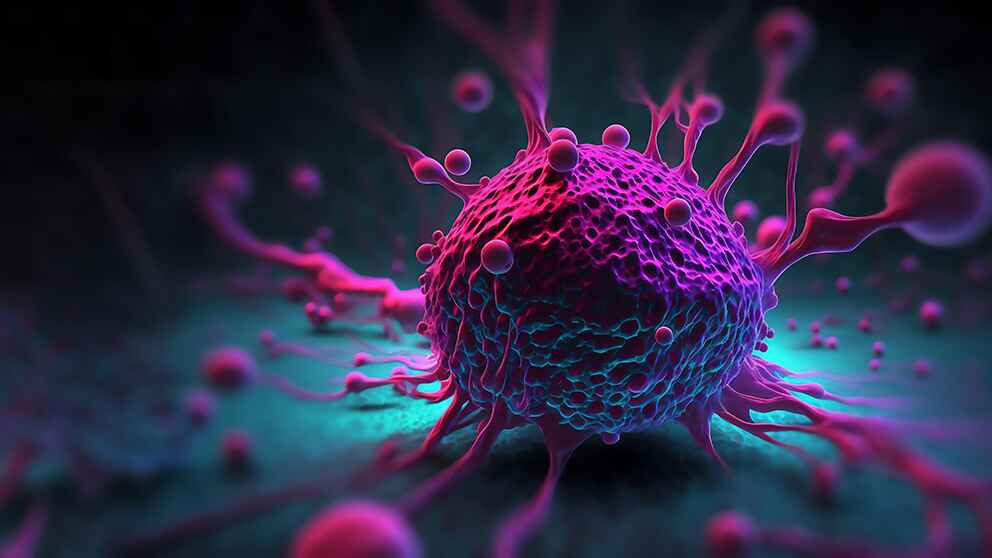5 Most Common Cancers in India

Cancer remains a significant health challenge globally, with varying prevalence and types across different regions. In India, the burden of cancer is considerable, affecting millions annually. This blog post delves into the five most common cancers in India, exploring their prevalence, risk factors, symptoms, treatment options, and preventive measures.
1. Breast Cancer
Breast cancer is the most prevalent cancer among women in India and has been on the rise in recent years. Early detection and advances in treatment have improved survival rates, but awareness and access to healthcare remain critical issues.
Prevalence and Risk Factors:
- Breast cancer accounts for approximately 14% of all cancers in Indian women.
- Risk factors include age, genetic mutations (BRCA1 and BRCA2), family history, hormonal factors, obesity, and lifestyle factors such as alcohol consumption and physical inactivity.
Symptoms:
- A lump or thickening in the breast or underarm.
- Change in the size, shape, or appearance of the breast.
- Dimpling or puckering of the skin on the breast.
- Nipple discharge or inversion.
Treatment:
- Surgery (lumpectomy or mastectomy) is often the first line of treatment.
- Radiation therapy, chemotherapy, Radiology Imaging, hormonal therapy, and targeted therapy are used depending on the stage and type of breast cancer.
Prevention:
- Regular screening through mammograms and self-examinations.
- Maintaining a healthy weight, regular exercise, limiting alcohol consumption, and considering prophylactic measures for high-risk individuals.
2. Cervical Cancer
Cervical cancer is the second most common cancer among Indian women, largely preventable through vaccination and regular screening. However, it remains a leading cause of cancer mortality due to inadequate screening and vaccination coverage.
Prevalence and Risk Factors:
- Cervical cancer constitutes about 16.5% of all female cancers in India.
- Human papillomavirus (HPV) infection is the primary cause.
- Risk factors include early sexual activity, multiple sexual partners, smoking, and a weakened immune system.
Symptoms:
- Abnormal vaginal bleeding (post-coital, intermenstrual, or postmenopausal).
- Unusual vaginal discharge.
- Pelvic pain or pain during intercourse.
Treatment:
- Early-stage cervical cancer can be treated with surgery (hysterectomy).
- Advanced stages may require radiation therapy, chemotherapy, or a combination of both.
Prevention:
- HPV vaccination for girls and young women.
- Regular Pap smears and HPV tests.
- Safe sexual practices and smoking cessation.
3. Oral Cancer
Oral cancer is particularly prevalent in India, attributed to widespread tobacco use in various forms, including smoking and chewing, as well as betel quid (paan) consumption.
Prevalence and Risk Factors:
- Oral cancer accounts for around 30% of all cancers in India.
- Major risk factors include tobacco use, betel quid chewing, alcohol consumption, poor oral hygiene, and HPV infection.
Symptoms:
- Persistent sores or ulcers in the mouth that do not heal.
- Lumps or thickening in the oral cavity.
- Difficulty in swallowing or chewing.
- Unexplained bleeding or numbness in the mouth.
Treatment:
- Surgery to remove the tumor is common.
- Radiation therapy and chemotherapy are used, especially for advanced stages.
- Rehabilitation for speech and swallowing may be necessary post-treatment.
Prevention:
- Avoiding tobacco products and limiting alcohol intake.
- Maintaining good oral hygiene and regular dental check-ups.
- Awareness and early detection through regular oral examinations.
4. Lung Cancer
Lung cancer, a leading cause of cancer-related deaths worldwide, is also a significant concern in India. Smoking remains the primary cause, but non-smokers are also at risk due to factors like air pollution and occupational hazards.
Prevalence and Risk Factors:
- Lung cancer constitutes about 5.9% of all cancers in India.
- Smoking is the major risk factor, along with exposure to secondhand smoke, air pollution, radon gas, and occupational exposure to carcinogens like asbestos.
Symptoms:
- Persistent cough, sometimes with blood.
- Shortness of breath and wheezing.
- Chest pain and recurrent respiratory infections.
- Unexplained weight loss and fatigue.
Treatment:
- Surgery is an option for early-stage lung cancer.
- Radiation therapy, chemotherapy, targeted therapy, and immunotherapy are used depending on the stage and type of lung cancer.
Prevention:
- Avoiding smoking and exposure to secondhand smoke.
- Reducing exposure to known carcinogens at the workplace.
- Regular health check-ups and early detection for high-risk individuals.
5. Colorectal Cancer
Colorectal cancer, involving the colon and rectum, is increasingly being diagnosed in India. While more common in older adults, lifestyle changes and genetic factors contribute to its rising incidence among younger populations as well.
Prevalence and Risk Factors:
- Colorectal cancer accounts for about 6% of all cancer cases in India.
- Risk factors include a diet high in red and processed meats, low physical activity, obesity, smoking, alcohol consumption, and a family history of colorectal cancer.
Symptoms:
- Changes in bowel habits (diarrhea or constipation).
- Blood in the stool or rectal bleeding.
- Persistent abdominal discomfort (cramps, gas, or pain).
- Unexplained weight loss and fatigue.
Treatment:
- Surgery is the primary treatment for localized colorectal cancer.
- Chemotherapy, radiation therapy, and targeted therapy are used for advanced stages.
- Regular follow-ups are crucial for early detection of recurrences.
Prevention:
- A diet rich in fruits, vegetables, and whole grains.
- Regular physical activity and maintaining a healthy weight.
- Routine screening tests like colonoscopy and stool tests starting at age 50, or earlier for those with a family history.
Conclusion
The rising incidence of cancer in India calls for a multi-faceted approach involving prevention, early detection, and advanced treatment. Public health initiatives aimed at reducing risk factors, improving access to healthcare, and increasing awareness can significantly reduce the burden of these common cancers. Encouraging regular screenings, adopting healthier lifestyles, and leveraging advances in medical research are pivotal steps in combating cancer and improving the quality of life for those affected.
Understanding the most common cancers in India and their implications empowers individuals and communities to take proactive measures towards better health outcomes. By fostering a culture of awareness and preventive healthcare, we can hope to see a decline in cancer-related morbidity and mortality in the future.